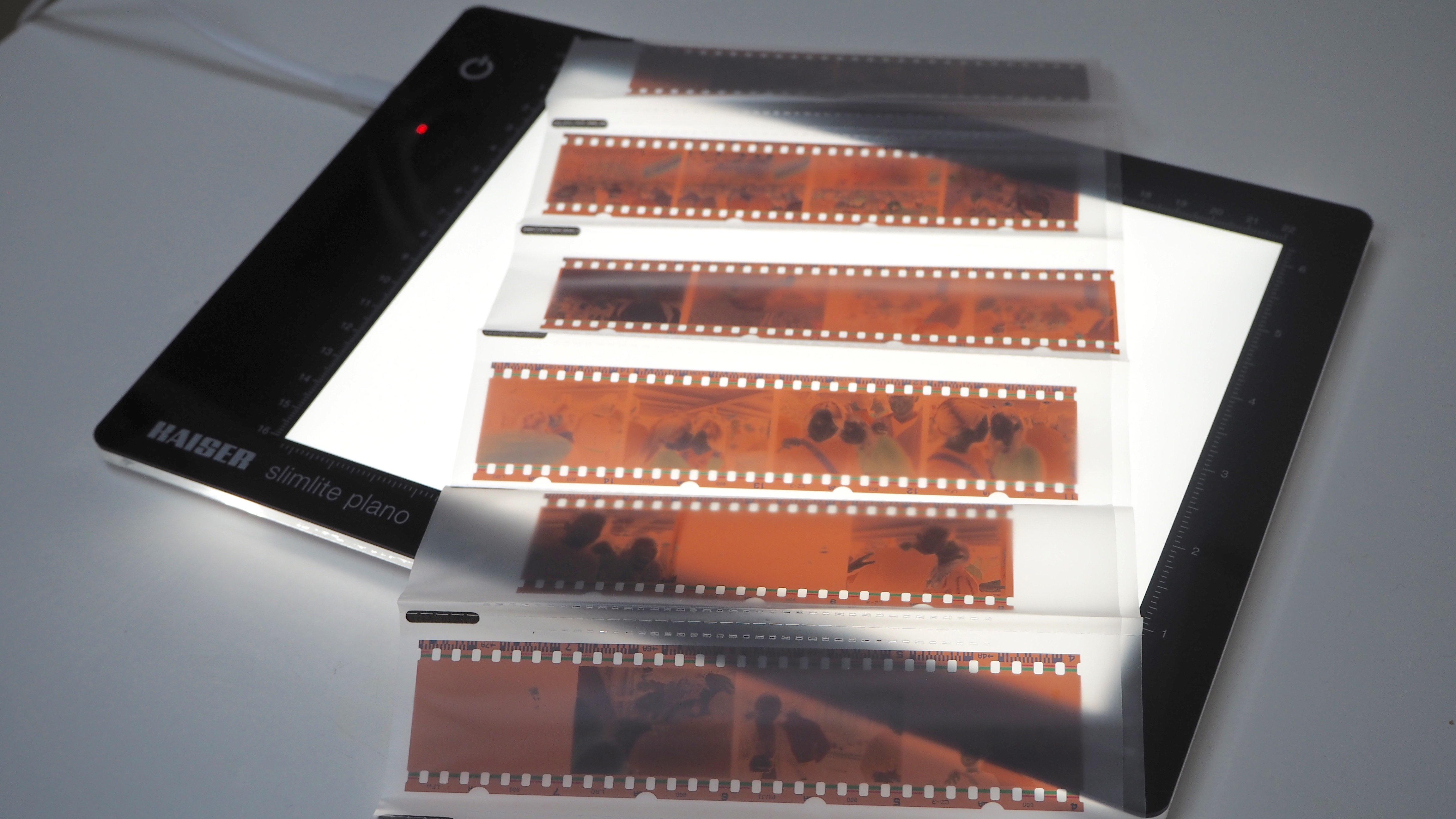Digital Camera World Verdict
Available in a choice of three sizes up to A2, but all with the same ‘Slimlite Plano’ nomenclature and core feature set, we were sent the most diminutive lightbox/panel option in the 2453 model for review, which is just slightly smaller overall than a sheet of A4, or US letter-sized paper. Resembling a typical computer tablet or iPad in its resting state, the advantage here over less expensive alternatives from rival manufacturers is that the Kaiser is both rechargeable battery and mains powered. This has the definite advantage that it can be used without the need for the supplied USB cable or plug once its internal cell is fully juiced. The flat, slender build and portable size and weight also mean we don’t need a large table space to go through our slides, negatives, and transparencies illuminated by its daylight-balanced LED display. Indeed we can rest this smallest Kaiser lightbox on our laps; whether that’s on a train, on a plane, or sat on the sofa in front of the TV.
Pros
- +
Straightforward plug and play operation
- +
Unit is just 8mm ‘thick’ and portable with it
- +
Operation via built-in rechargeable battery or mains
- +
USB cable supplied as part of the package
Cons
- -
More expensive – and marginally thicker – than competing light panels, albeit ones without an internal battery
- -
Internal battery is slow to charge, requiring five to six hours to reach full capacity and then lasting just five hours
Why you can trust Digital Camera World
Cumbersome analog-era light boxes for reviewing and identifying images from a strip of film negatives or a handful of slides are a thing of the past. We now have computer tablet-slim LED-powered light panels and boxes. As well as being a lot lighter and more portable than prior iterations, options such as the Kaiser Slimlite Plano we’re playing with here, at just 8mm ‘thick’, have the further advantage of remaining comfortably cool to the touch. Such light panels can also be used for accurately tracing around images as well as, at a push, providing an additional light source for harried photographers. Its manufacturer suggests it could even be used as a background light for macro photography.
Currently, Kaiser provides three different-sized iterations of the Slimlite Plano, identical save for incrementally increasing dimensions. This allows the user to choose the best fit for size and budget from the range. So, without further ado, let’s shed some extra light on our review subject…
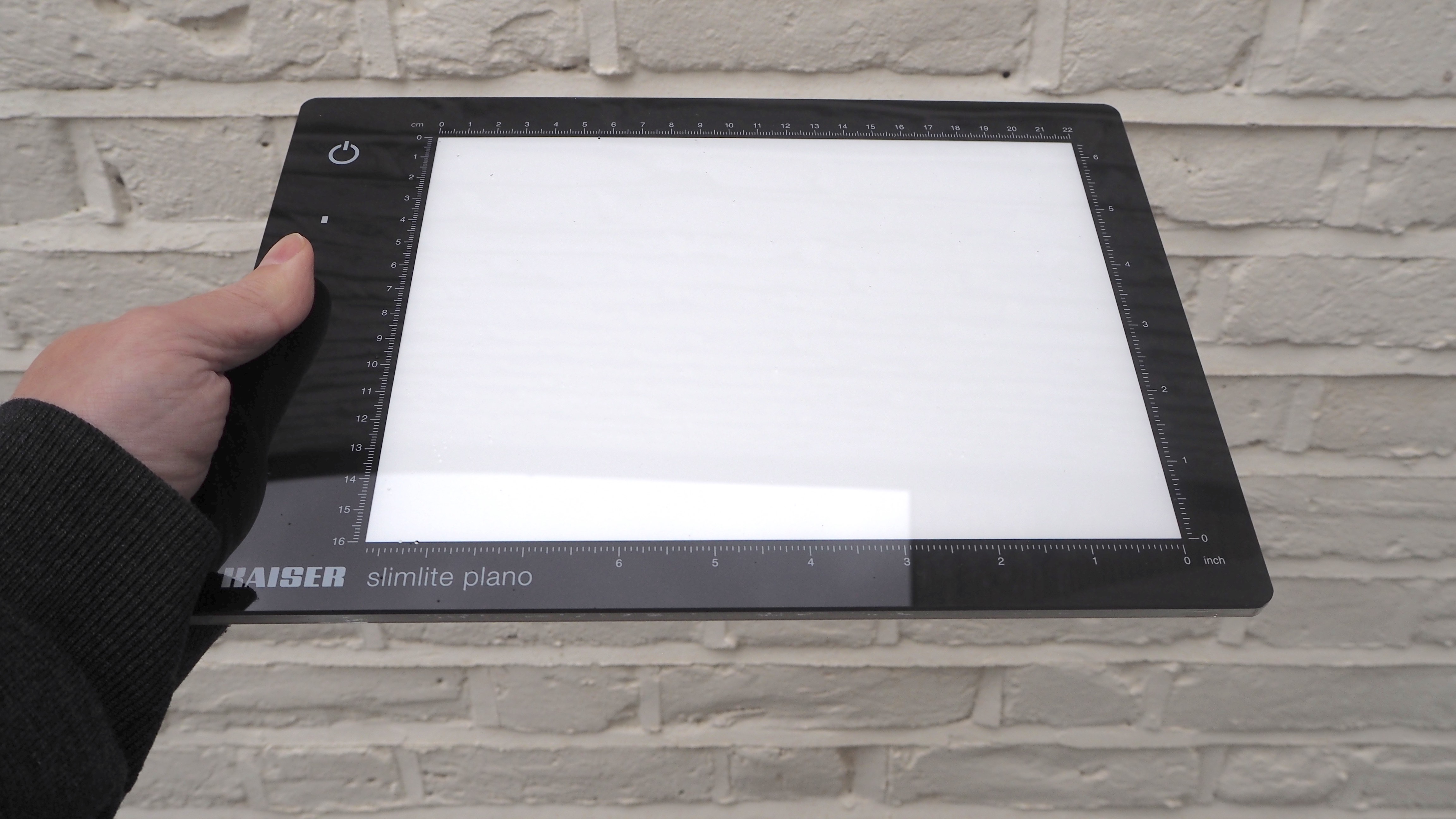
Kaiser Slimlite Plano: Specifications
| Light source | LED |
| Active area | 22 x 16 cm or 8.7 x 6.3 in |
| Construction | Acrylic panel |
| Interface | Micro USB |
| Weight | 570g |
| Dimensions | 29 x 20 x 0.8 cm or 11.4 x 7.9 x 0.3 in |
Kaiser Slimlite Plano: Features
At its most basic, this is a 5000 kelvin, daylight-balanced LED light panel. Providing soft, even light, the Kaiser Slimlite Plano in its most compact 2453 model iteration is overall just a fraction smaller than a sheet of A4 or US letter-sized paper. That means the actual illuminated area of this specific lightbox is more compact still at 22x16cm or 8.7x6.3 inches.
Happily, on a practical level that provides us with enough space to examine a strip of 35mm negatives. Yet power users might also want to take a look at the physically larger Kaiser 2454 and 2455 alternatives, which boast central illuminated areas of 32x22.8cm (12.6x8-inches) or 42.9x30.9cm (16.9x12.2-inches) respectively.
Size aside, the core features of each of these Kaiser options are the same. This means just the one hard copy manual provided out of the box in German, English, Spanish, and Italian does for all three models mentioned.
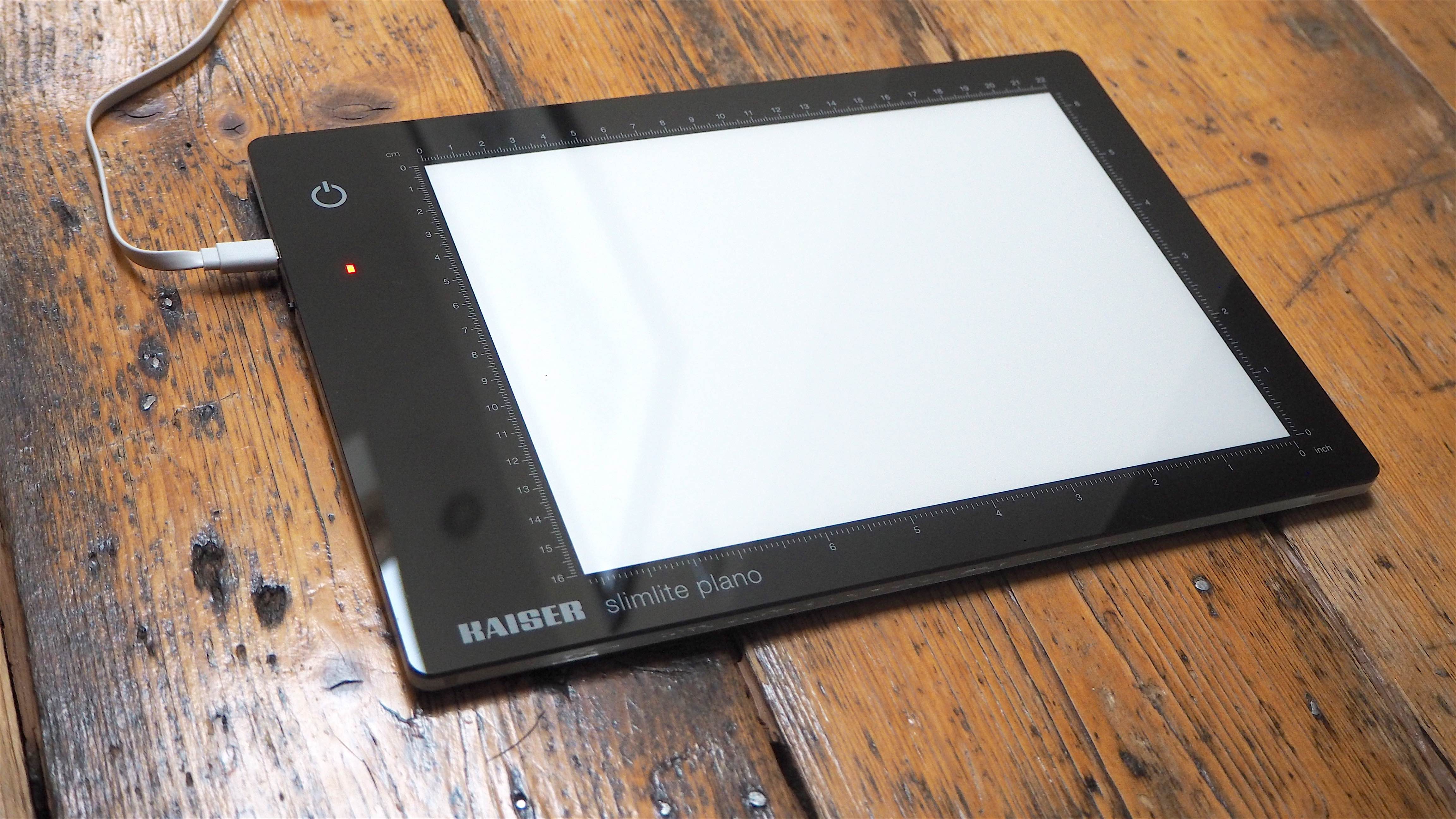
Size apart, a key feature that differentiates the Kaiser from more budget-priced but otherwise outwardly similar-looking LED light panels is that it features a built-in lithium-ion rechargeable battery. With USB charging offered, this means it’s a unit we can potentially take anywhere with us. Even if we’re just using it balanced on our lap in front of the TV.
Furthermore, height and width measurements are provided along all four black edges that frame the central illuminated portion of the unit. Whether we’re using it in landscape or portrait aspect ratio, scales are shown in centimeters and inches.
Kaiser Slimlite Plano: Design & Handling
With a glossy black bezel surrounding a central illuminated area, this German-made device looks fairly classy in appearance. The Kaiser Slimlite Plano LED lightbox manages the feat of being manageably lightweight at 570g, in its 2453 model iteration, without its build feeling insubstantial with it. This weight rises to 1.69 kg for the alternative of the largest 2455 display, which makes the latter less of an option than the 2453 for going through images with it perched on our lap.
Usefully a two-metre USB cable is provided out of the box. Our review sample also came with a non-UK-compatible two-pin plug that will serve our European friends better. That said, the lack of a compatible plug wasn’t an issue at all, as most of us will already own a suitably USB-enabled mains plug for charging our smartphone or tablet.
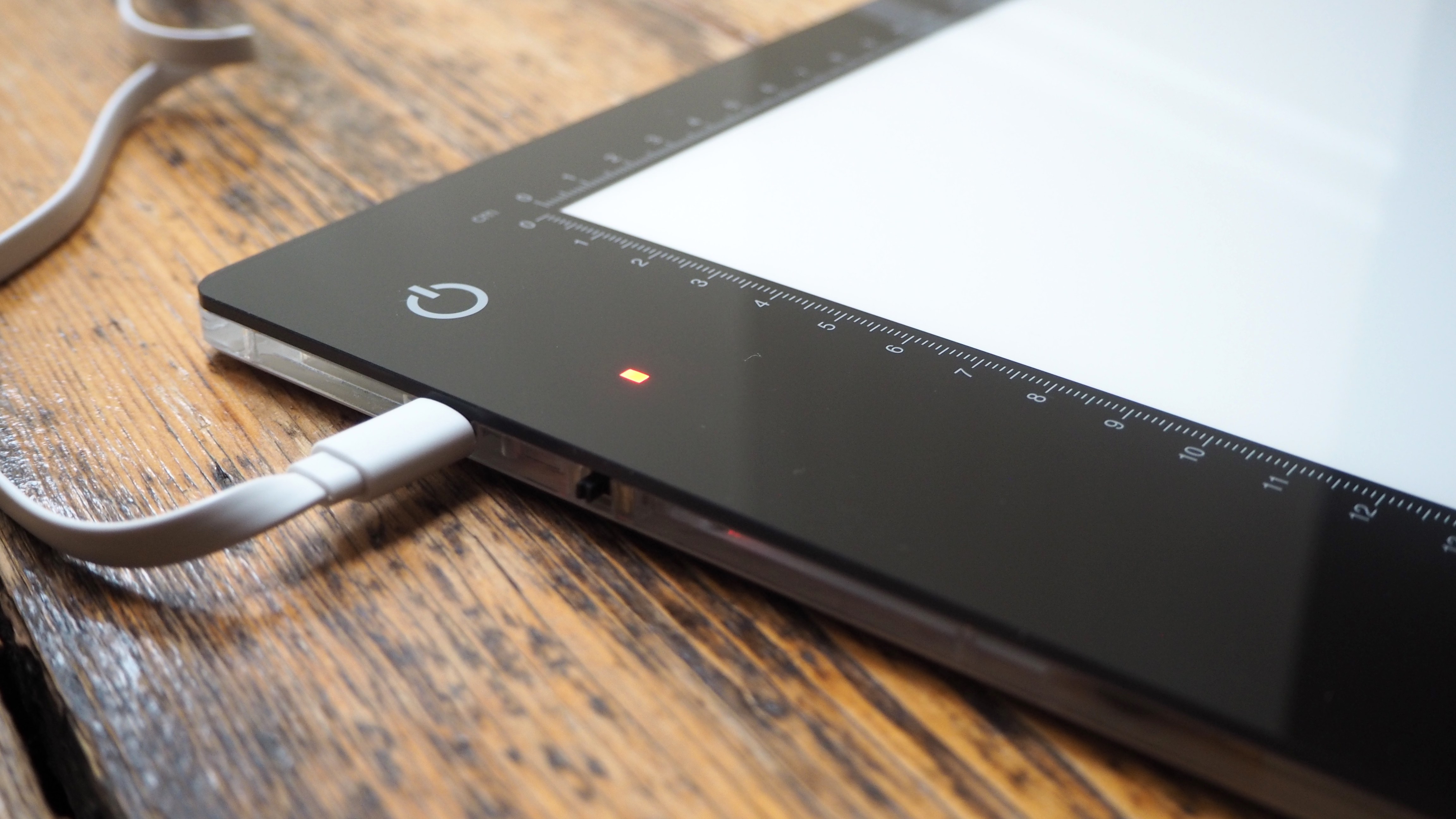
Depending on how we wish to use it, there is a manual switch on the side of the Kaiser Slimlite Plano for swapping between either USB-powered or battery-powered operation as required.
While we’re told a fully charged battery will last for around five hours at full power when the Kaiser Slimlite Plano is used independently of mains or supplementary power, charging time is a very leisurely five to six hours, which suggests possible room for improvement.
Kaiser Slimlite Plano: Performance
Operation of the Kaiser Slimlite Plano lightbox is as straightforward as it goes. To get started from scratch, we simply plug the supplied USB cable into the device and the other end into a suitably equipped mains plug. We follow this up with a press of the touch-sensitive power button set into the black bezel that frames the central rectangular illuminated area.
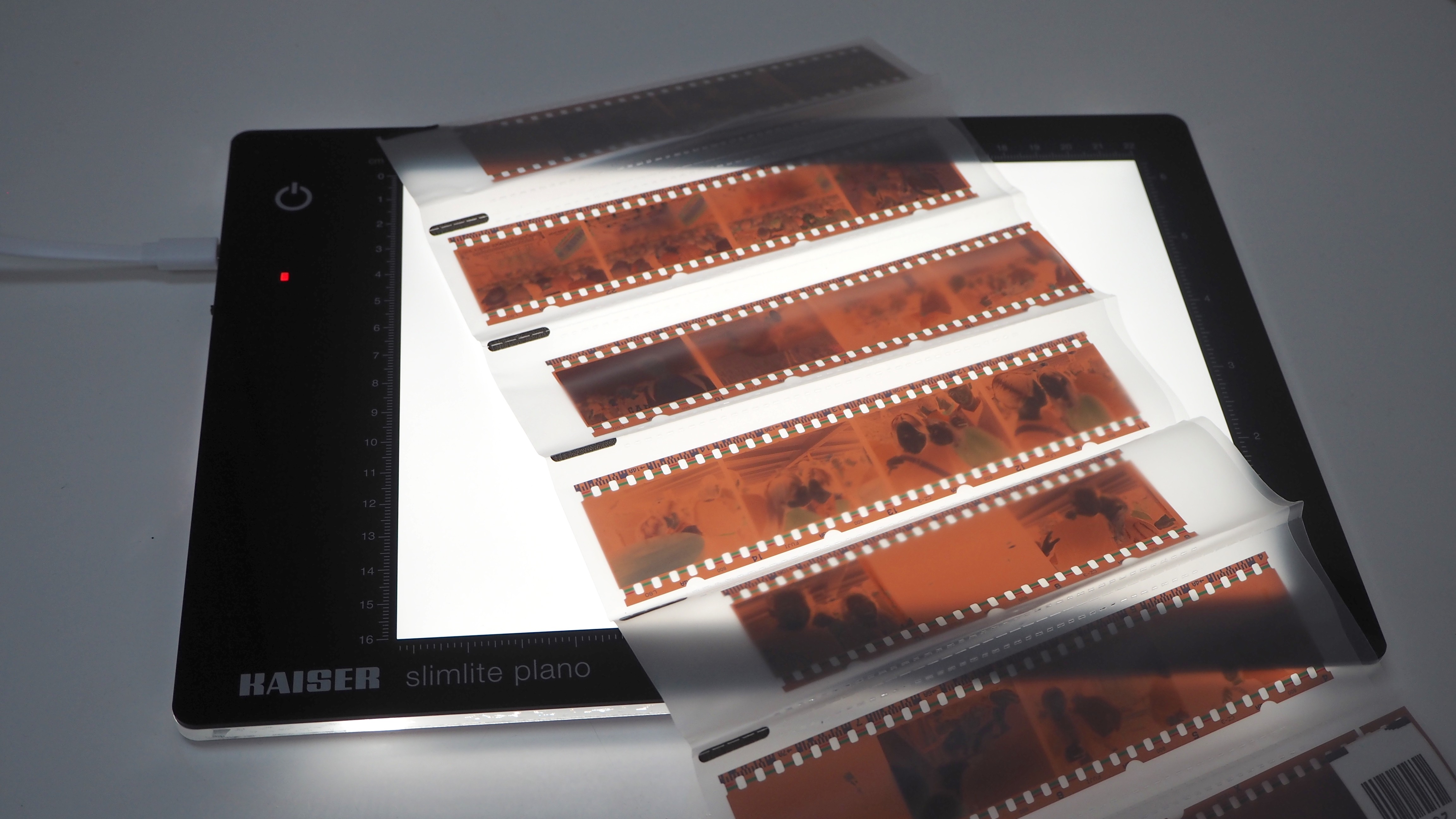
As with competing models from the likes of Chinese manufacturer Huion, the brightness provided by the Kaiser Slimlite Plano is manually dimmable, as desired.
Once the device has been switched on, and maximum brightness reached, a second touch of the on/off button will smoothly and gradually dim the display the longer we keep our finger in place. Thus, we can quickly arrive at a level of intensity that suits the prevailing conditions we’re using it in, or which feels most comfortable to our eyes. A further tap of the same button deactivates the device entirely.
As we say, the operation is very intuitive and straightforward and doesn’t require a deep dive into the similarly sparse printed manual. It does the job as intended with the minimum amount of fuss, which is just how we like it.
Kaiser Slimlite Plano: Verdict
The flat profile, 8mm slim Kaiser Slimite Plano lightbox is actually more of an LED panel than a ‘box’ per se – and in that respect is all the better and more portable for it. The unit comes in a versatile choice of three differing sizes, at the time of writing, that should suit everyone from casual users through to power users. Each offers an incremental step up in weight, size, and, inevitably, price with it.
Operation is Plug’n’Play simplicity itself, with its soft, even, and dimmable light leaving us free to concentrate on examining our negatives, transparencies, or slides rather than being distracted by any extraneous functions on the unit. While at first, the Kaiser may appear a little pricey next to similar-looking budget-priced alternatives, the inclusion of a lithium-ion rechargeable battery helps lift it somewhat above purely mains-powered alternatives.
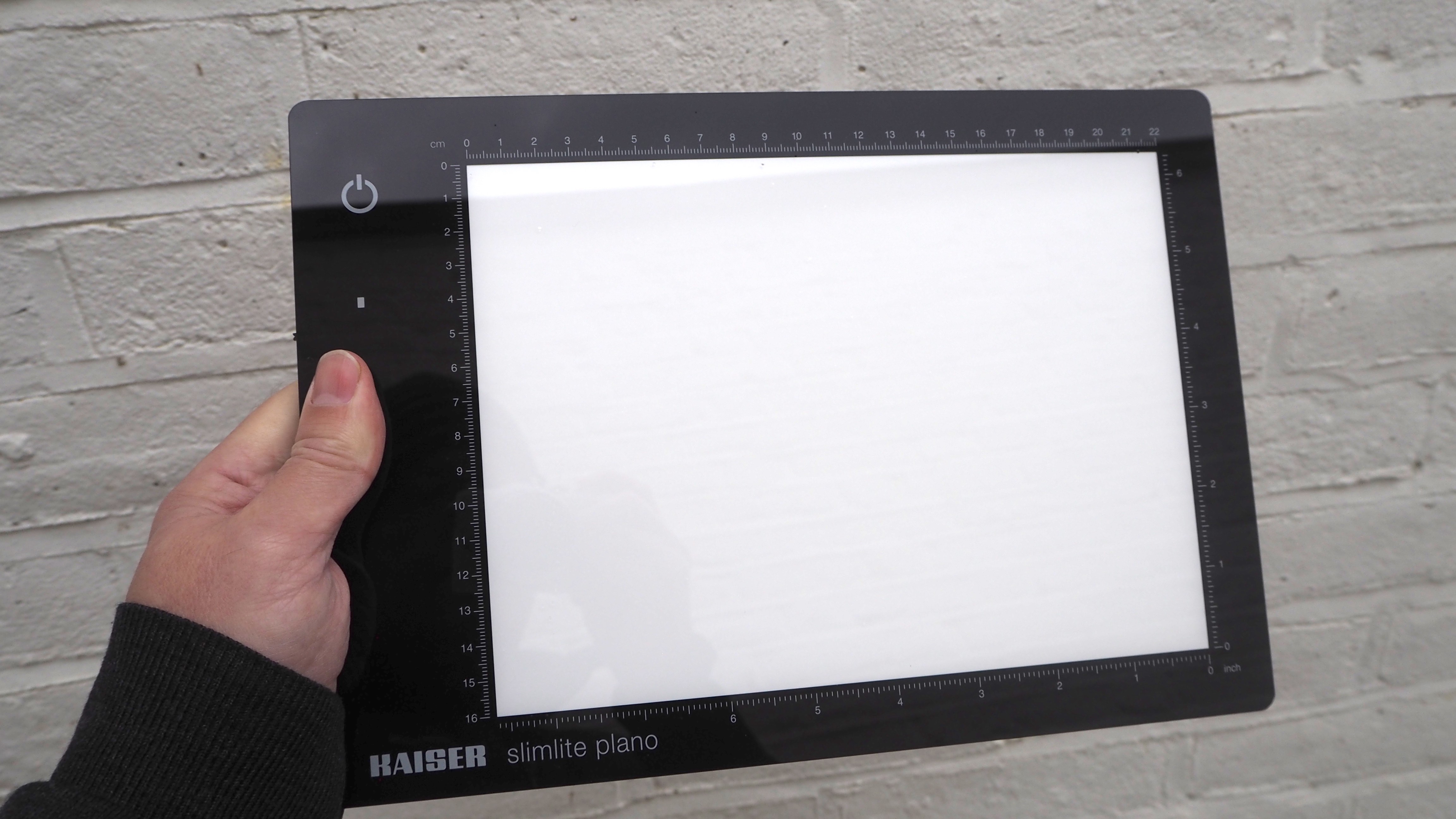
Alternatives
Marginally larger alternatives to the Kaiser Slimlite Plano lightbox in its 2453 iteration include the Huion L4S, which has an illuminated area closer to the size of a sheet of A4/ US letter. However, that rival doesn’t feature a built-in battery, which may be an advantage in the Kaiser’s favor if we’re seeking an LED light pad that’s as portable as it is practical. The Huion does have a slightly slimmer profile overall at around 5mm ‘thick’, compared with this Kaiser’s still very slender 8mm depth.
The Chinese-made Huion alternative is however also a fair amount cheaper should we be looking for an affordable option that, while frill-free, still nevertheless does the job intended. So it really depends on whether the Kaiser’s built-in rechargeable lithium-ion battery makes all the difference to you personally.
Gavin has over 30 years’ experience of writing about photography and television. He is currently the editor of British Photographic Industry News, and previously served as editor of Which Digital Camera and deputy editor of Total Digital Photography.
He has also written for a wide range of publications including T3, BBC Focus, Empire, NME, Radio Times, MacWorld, Computer Active, What Digital Camera and the Rough Guide books.
With his wealth of knowledge, Gavin is well placed to recognize great camera deals and recommend the best products in Digital Camera World’s buying guides. He also writes on a number of specialist subjects including binoculars and monoculars, spotting scopes, microscopes, trail cameras, action cameras, body cameras, filters and cameras straps.
